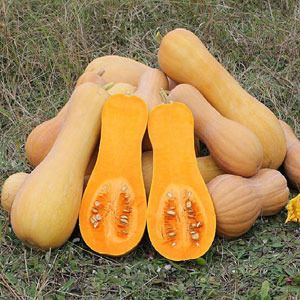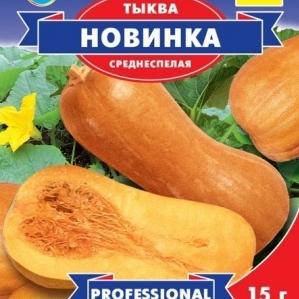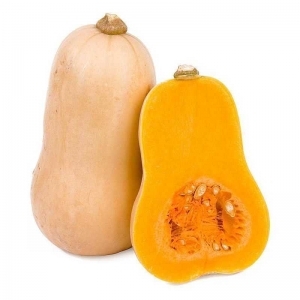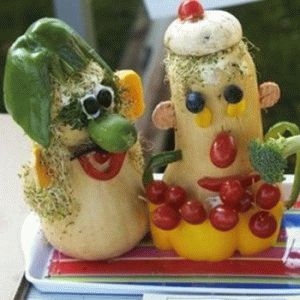The most popular varieties of pear-shaped pumpkins: how to grow and what is important to know about them
Pumpkins similar to large pears are actively used not only in cooking, but also as decorations and decorations. Fancy lanterns or designer vases are made from the fruits. To grow interesting pear-shaped gourds, you do not need to have special knowledge of crop care. It is enough to regularly water and fertilize the beds, to carry out preventive measures to protect against diseases. Later in the article, we will look at a description of pumpkin varieties that look like pears.
The content of the article
Why is a pear-shaped pumpkin good
Gardeners love the pear-shaped pumpkin for its interesting appearance (see photo). Attractive and vibrant, the fruits look delicious and look great on any table. Summer residents appreciate these fruits for the following advantages:
- tasty and juicy pulp;
- vitamin composition;
- unpretentious care;
- versatility in application;
- decorativeness;
- high and stable yield.
Reviews of the most popular varieties
What is the name of a curly pumpkin in the form of a pear? How to fertilize pumpkin beds? Small reviews on the most popular pear-shaped varieties will help answer these questions.
Prikubanskaya

It belongs to the nutmeg varieties, has a delicate and juicy taste. Prikubanskaya resembles a ripe sweet melon. This variety is mid-season, summer residents harvest in 120-130 days from the moment of planting. The bushes are semi-sprawling, the length of the lashes is about 0.3 m. The pumpkins are elongated, in shape they resemble a thin and long pear. The color is brown-yellow, brown spots are visible on the surface. The pulp is red-orange, the rind is firm. Prikubanskaya is well stored and transported. The yield is stable, from 1 sq. m gardeners collect about 2 kg of ripe and tasty fruits.
Nutmeg variety used for the preparation of healthy and dietary meals. From the fruits, you can make cream soup, vegetable stew, vitamin salads and even sweet pastries: muffins, pies, cheesecakes, pancakes. Such tasty and low-calorie dishes are good for the body, saturate it with vitamins A and B, iron, beta-carotene, calcium and magnesium. At the same time, they do not harm the figure, because 100 g of Prikubanskaya contains only 28 kcal.
Pearl

Mid late grade, the pumpkin ripens in 130-140 days. It is recommended to plant in the middle lane or in the south of the country. Fertile and sunny beds are great for growing. Before planting, the land is carefully dug up and fertilized with peat. To get a rich harvest, summer residents recommend planting the variety in seedlings. To do this, a month before planting, seedlings are prepared: soil, seeds are poured into clean containers and placed on the windowsill. Every 10 days, seedlings are watered with warm water, every two weeks they are fed with organic fertilizers, for example, liquid bird droppings.
The average fruit length is about 40-50 cm, weight varies from 5 to 7 kg. The peel is thin, there are few seeds. The pulp is crispy and dense, due to the high carotene content it has a bright yellow color. The variety is sweet, so it is consumed both fresh and after heat treatment. Pearl is highly immune to diseases and insect pests. Stores well up to 4-5 months.
New

Another pear-shaped representative of nutmeg varieties ripens within 110-115 days. Novelty is planted after spring frosts. The distance between the bushes should be at least 60-70 cm. Pumpkins are watered every 5-7 days, about 1.5 liters of warm water are used for one bush. If the summer is rainy, then the amount of watering is reduced.Fertilize the variety three times per season. Summer residents are advised to alternate organic matter and mineral fertilizers. Wood ash, Bordeaux liquid, nitrogen-containing preparations, mineral complexes are used as top dressing.
The average weight of the fruit is 4 kg, the length is about 50 cm. The pumpkin has an orange-yellow color, dense flesh and excellent taste. The novelty has good transportability and can be stored for up to 6-8 months. As a rule, wooden boxes and dry ventilated areas, such as a cellar or basement, are used for storage. The yield is high, about 5 kg per 1 sq. m.
Sugar mace

The hybrid has a high immunity to diseases and pests. However, experienced gardeners still pay special attention to preventive measures. To prevent the plant from getting sick with powdery mildew, it is sprayed with milk whey 2-3 times per season. To protect the crop from aphids, slugs and spider mites, vegetables are fertilized with Bordeaux liquid or copper sulfate solution. These methods not only protect the beds from negative factors, but also improve the palatability of the pumpkin.
Nutmeg hybrid Sugar mace belongs to the early ripening, ripens in 90-100 days from the moment of planting. Fruits are long and curved; at the stage of technical ripeness they are green and then turn light beige. The pulp is rich yellow, the aroma is sweet, nutmeg. Pumpkin weight varies from 1 to 2 kg. Gardeners appreciate the hybrid for its high yield, from 1 sq. m collect about 15-20 kg of unusual vegetables.
Pineapple
The hybrid ripens in 100-110 days, suitable for growing in the south of the country... Pineapple has a tasty pulp, contains a large amount of vitamins and minerals. Fruit weight is about 2 kg. The pumpkin has a light orange color, firm and crispy flesh. It keeps well, it is often grown on an industrial scale. The product is consumed fresh, boiled, steamed and even fried.
Interesting! Regular consumption of pumpkin slows down the aging process and improves the quality of skin, hair and nails. In addition to pumpkin pulp, seeds are often used: they have a high content of copper, zinc and phosphorus.
Butternut

This variety is often called "nut pumpkin", the taste of the fruit is filled with nutmeg notes. The pear-shaped pumpkin weighs 1-1.5 kg. Has a dense skin and yellow-orange color. The variety is early ripening, ripens in 2.5-3 months. The vegetable is planted in greenhouses or in the open air. Before planting, be sure to disinfect seeds, beds and garden tools. When grown in seedlings, seedlings are hardened.
Variety Butternut needs regular weeding and loosening of the soil. The procedures saturate the beds with oxygen, which has a beneficial effect on the development of the bush. The pumpkin is fed twice a month. In addition, lashes are pinched for the best harvest. When 2-3 pumpkins are formed on one shoot, the shoots are removed.
Reviews of summer residents
Most summer residents prefer to grow beautiful and juicy pear-shaped pumpkins. Many are attracted by the classic orange color and melon aroma. However, sometimes expectations are not met: instead of large and attractive fruits, small and watery pumpkins grow.
Arina, Ufa: “I have been growing pear-shaped pumpkins for a long time. My favorites are Novinka and Zhemchuzhina varieties. They are similar to each other, have a juicy and sweet pulp. However, the Novinka variety is more productive. I dry pumpkin seeds and add them to baked goods, and from the pulp I make porridge and sweet jam for the winter. "
Olga, Moscow: "I prefer only nutmeg varieties. They have amazing taste and aroma. In leaving, they are capricious, however, if all agrotechnical rules are followed, problems do not arise. I especially like to make them a vitamin juice with ginger and lemon, and cook porridge for breakfast. "
Milan, Yekaterinburg: “I always plant pumpkins in the greenhouse. I especially love Pineapple. She is unpretentious in care, rarely gets sick.Before planting, be sure to disinfect the seeds and prepare the seedlings. I harvest in early September. We eat something right away, and leave the other part for the winter. "
Conclusion
Pear-shaped pumpkins are versatile in use. They are used to make Jack lamps for Halloween, use them as decorations and create original crafts.
Pear-shaped fruits for the most part belong to the nutmeg varieties, have remarkable taste and useful properties. Regular consumption of the product improves digestion, has a positive effect on the work of the cardiovascular and nervous systems. Pumpkin dishes are an excellent diet food that is low in calories.